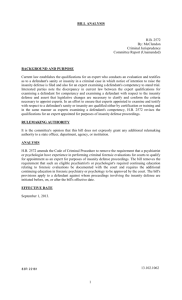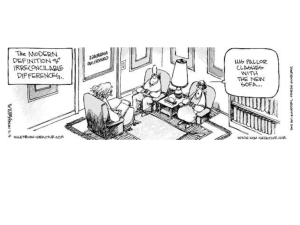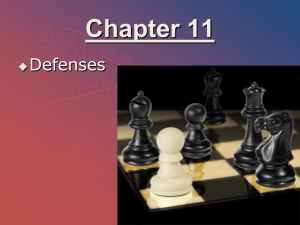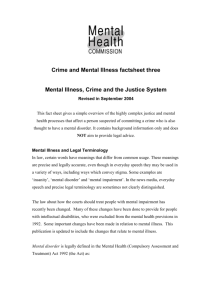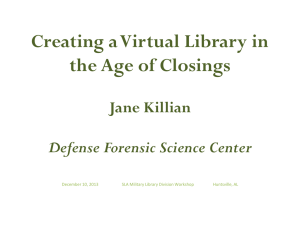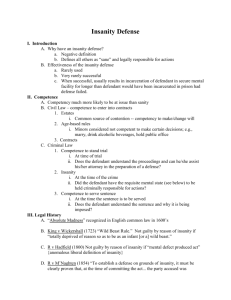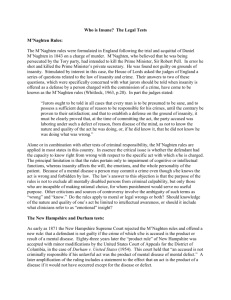Criminal Responsibility July 2004
advertisement
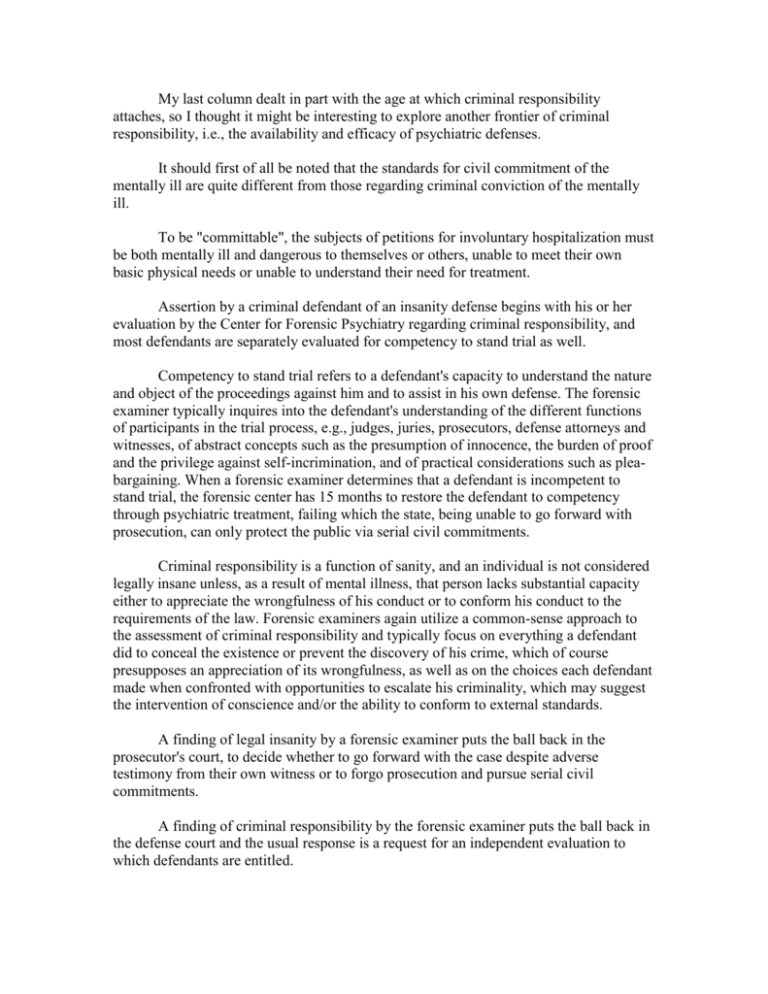
My last column dealt in part with the age at which criminal responsibility attaches, so I thought it might be interesting to explore another frontier of criminal responsibility, i.e., the availability and efficacy of psychiatric defenses. It should first of all be noted that the standards for civil commitment of the mentally ill are quite different from those regarding criminal conviction of the mentally ill. To be "committable", the subjects of petitions for involuntary hospitalization must be both mentally ill and dangerous to themselves or others, unable to meet their own basic physical needs or unable to understand their need for treatment. Assertion by a criminal defendant of an insanity defense begins with his or her evaluation by the Center for Forensic Psychiatry regarding criminal responsibility, and most defendants are separately evaluated for competency to stand trial as well. Competency to stand trial refers to a defendant's capacity to understand the nature and object of the proceedings against him and to assist in his own defense. The forensic examiner typically inquires into the defendant's understanding of the different functions of participants in the trial process, e.g., judges, juries, prosecutors, defense attorneys and witnesses, of abstract concepts such as the presumption of innocence, the burden of proof and the privilege against self-incrimination, and of practical considerations such as pleabargaining. When a forensic examiner determines that a defendant is incompetent to stand trial, the forensic center has 15 months to restore the defendant to competency through psychiatric treatment, failing which the state, being unable to go forward with prosecution, can only protect the public via serial civil commitments. Criminal responsibility is a function of sanity, and an individual is not considered legally insane unless, as a result of mental illness, that person lacks substantial capacity either to appreciate the wrongfulness of his conduct or to conform his conduct to the requirements of the law. Forensic examiners again utilize a common-sense approach to the assessment of criminal responsibility and typically focus on everything a defendant did to conceal the existence or prevent the discovery of his crime, which of course presupposes an appreciation of its wrongfulness, as well as on the choices each defendant made when confronted with opportunities to escalate his criminality, which may suggest the intervention of conscience and/or the ability to conform to external standards. A finding of legal insanity by a forensic examiner puts the ball back in the prosecutor's court, to decide whether to go forward with the case despite adverse testimony from their own witness or to forgo prosecution and pursue serial civil commitments. A finding of criminal responsibility by the forensic examiner puts the ball back in the defense court and the usual response is a request for an independent evaluation to which defendants are entitled. Cases which involve a battle between expert witnesses cause trial attorneys to question the whole concept of expert testimony because, just as consultation of ten attorneys may yield ten different opinions about the same issue, a wide range of opinions are available from professionals in dozens of fields. And, although there are less polite ways to describe this phenomenon, certain witnesses always seem to testify on behalf of the prosecution and others always seem to be called by the defense. The range of expert opinion is especially broad in the behavioral sciences; such witnesses unquestionably bring to court their own core values about the appropriate parameters of personal responsibility, and a process which was designed to assist jurors often further complicates their task. The situation improved fairly dramatically in Michigan in 2001, when the Supreme Court abolished the so-called "diminished capacity" defense, which allowed defendants, even though legally sane, to offer evidence of some mental abnormality to negate the specific intent required to commit a particular crime. All sorts of designer disorders had crept in through this window and its closure left us with only the more stringent insanity defense. Trials of cases with insanity defenses, regardless of how the experts align themselves, end with juries being given the option of finding defendants, with respect to each crime charged, Not Guilty By Reason of Insanity (NGRI) or Guilty But Mentally Ill (GBMI), the latter verdict being appropriate where a factually guilty defendant is mentally ill but does not additionally meet the criteria for legal insanity. The consequences of each verdict are obviously opposite, with NGRI defendants being committed to the forensic center for no more than 60 days, after which civil commitments may follow, and GBMI defendants being sentenced like any other defendant with the proviso that they receive treatment while incarcerated. Inevitably, of course, there are people who fall through the cracks. In every community there are individuals who are obviously mentally ill, do not meet the criteria for involuntary hospitalization but are of questionable competence and criminal responsibility, and habitually commit relatively minor crimes for which the use of the resources of the forensic center is not justified. Such individuals pit the mental health and criminal justice systems against each other, with each side believing certain individuals are the other's problem. Yet, local law enforcement and county jails, being on the front lines of conflict intervention, always seem to end up dealing with those whose behaviors they are ill-equipped to handle.
